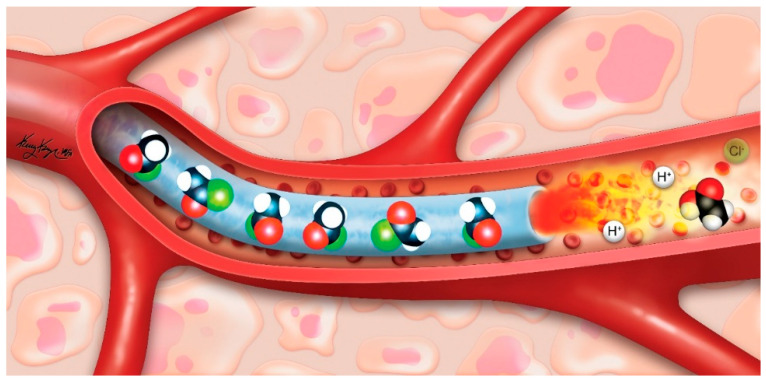Figure 2.
The graphic illustrating the concept for thermoembolization (not to scale). A catheter in the lumen of a blood vessel contains the reactive compound (acetyl chloride, green denotes chlorine atoms) which is delivered using an inert vehicle such as ethiodized oil. On exiting the catheter, reaction occurs leading to local highly denaturing conditions. Conversion of the acid chloride is depicted as downstream presence of acetic acid, which rapidly leads to vessel thrombosis, thus limiting systemic exposure. Reproduced from [54], PLoS ONE, 2018.

